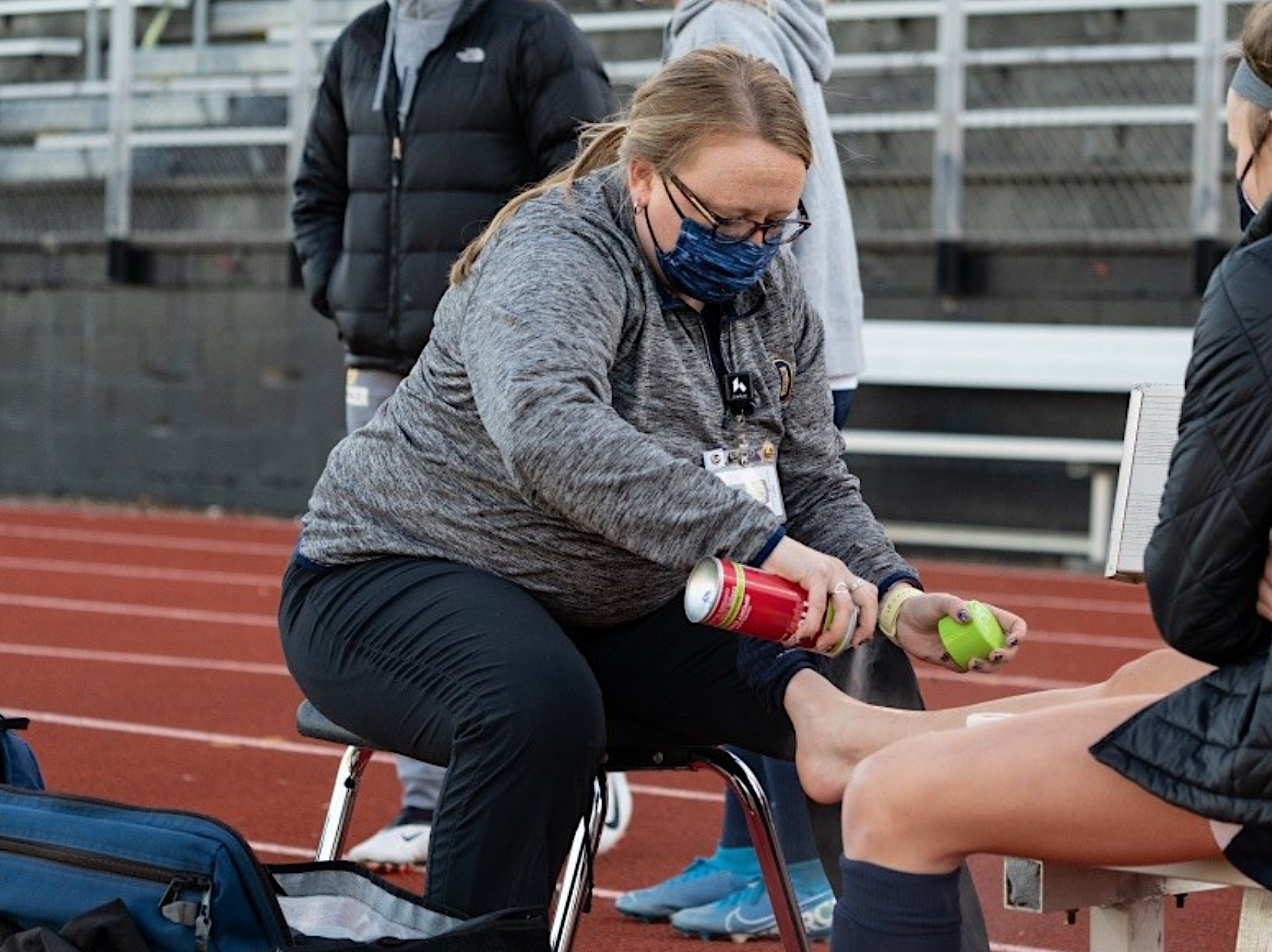Sports Medicine
Want to learn more about this at Kettering Health?
As coaches, parents, and players get ready for the fall sports season, the coronavirus pandemic has been—literally—a game-changer. Guidelines for sports participation continue to change in response to fluctuating COVID-19 case numbers and new research.
If that sounds like a lot to keep track of—it is. But Kettering Health Network’s Sports Medicine providers are staying up-to-date on the latest information to help ensure the safest conditions and protocols possible.
“We mesh all the various guidelines together to provide the safest measures for athletes,” says Lori Oda, manager of athletic trainers for Kettering Health Network. “Athletic trainers are used to adapting quickly to changing circumstances.”
Whether it’s an injury or severe weather that disrupts a game, “athletic trainers are programmed to get players back on the field safely,” Lori says.
COVID-19: What’s new
General COVID-19 guidelines that cover all sports are in place, along with additional protocols that vary per sport.
In addition to hygiene and cleaning guidance, other preventive measures listed by the Ohio High School Athletic Association (OHSAA) include
- Maintaining physical distancing and requiring face coverings while not on the field or court of play
- Reducing or eliminating unnecessary travel
- Reducing or eliminating sharing equipment
- Reducing or eliminating contact with athletes from schools or programs outside of their own league/conference
Athletic trainers also have new safety measures to follow when working with your child. These include wearing masks and frequently cleaning high-touch surfaces in the athletic training rooms.
While training, practices, and competitions might not look or feel the same, “all of the guidelines are to ensure the athletes are safe,” Lori says.
Should my child participate?
Hesitant about your child participating in a contact sport? Consult your health care provider, especially if your child or a family member has a compromised immune system.
As an alternative to your athlete’s usual sport, Lori suggests participating in a non-contact sport such as tennis, volleyball, or golf.
“Exercise is also good for a child’s mental health,” she says. “In fact, for some kids, sports are their only outlet. They need that participation.”
Months of social distancing have restricted children’s usual activities and opportunities to spend time with friends. Right now, many young athletes need the mental health boost sports can provide.
What hasn’t changed
OHSAA requires a new physical every year, and now is the time to take care of that. Kettering Health Network Sports Medicine providers offer appointments for individuals, as well as blocks of appointment times reserved for athletes from schools and the network’s partner organizations.
Bring the physical form and any additional paperwork your school or organization requires.
Finally, amid all the COVID-19 concerns, make sure your athlete follows sun and heat precautions as well: Wear sunscreen, stay hydrated, and—especially if wearing a mask or football leggings—be aware of signs of heat illness such as thirst, clammy skin, or lack of sweat.
“Children’s bodies don’t regulate heat as well as an adult’s,” Lori says.
For current COVID-19 rules and guidelines, visit:
- Centers for Disease Control and Prevention (CDC)
- Responsible RestartOhio
- OHSAA
- National Federation of High School Associations










